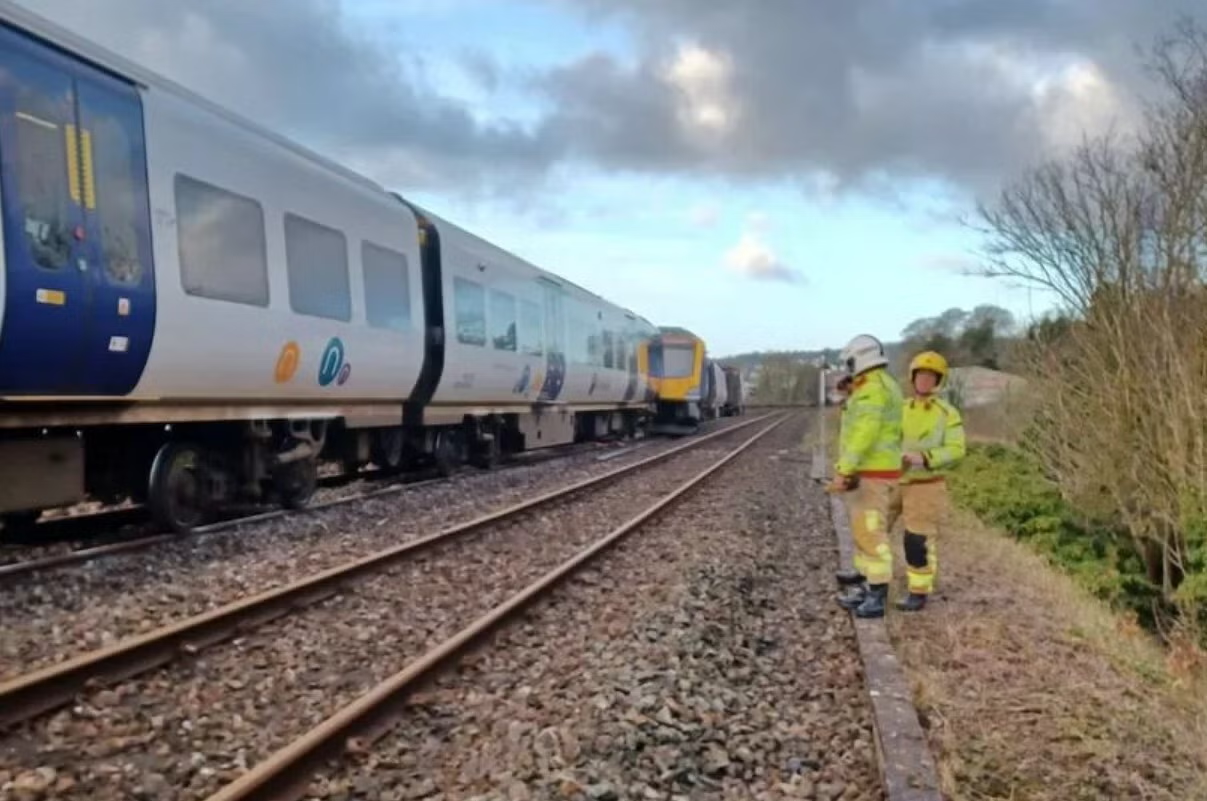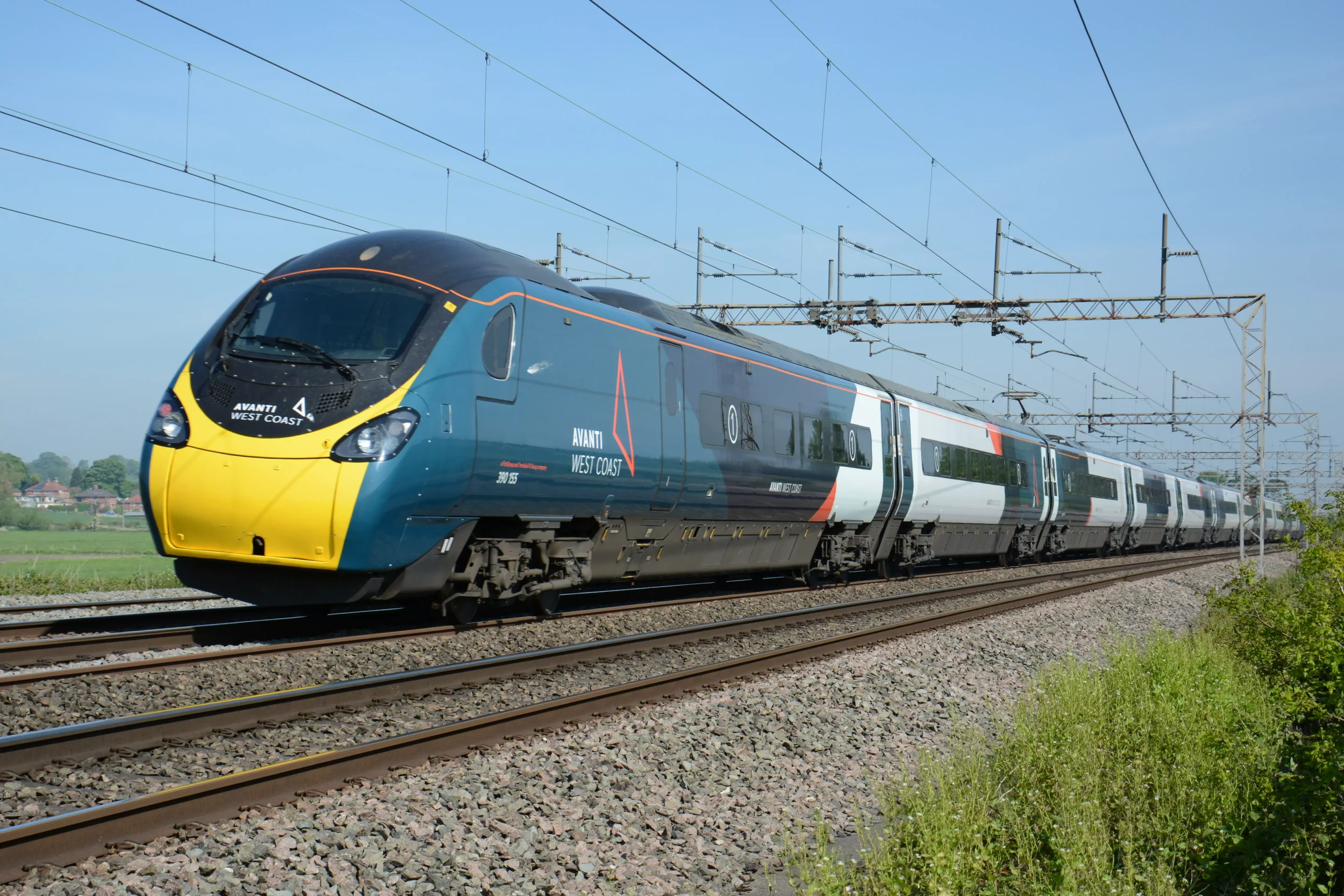Train Derails on West Coast Main Line Near Shap, Cumbria: No Injuries Reported Amid Major Disruption
An Avanti West Coast train from Glasgow to London derailed near Shap in Cumbria this morning, prompting a major incident declaration and halting services on a key northern rail route. The 4:28 a.m. service left the tracks at around 6:10 a.m. between Penrith North Lakes and Oxenholme Lake District stations, with more than 200 passengers and crew on board. Emergency services responded quickly, and authorities confirmed no injuries as of mid-morning.
Firefighters and paramedics from the North West Ambulance Service reached the site shortly after the incident, focusing on a safe evacuation. The train remained stable on the embankment, allowing crews to assist passengers step by step. Network Rail reported all lines blocked in both directions, affecting travel between Carlisle and Preston.
Transport Secretary Heidi Alexander addressed the situation early, emphasizing passenger safety. "There are no reported injuries," she said on LBC Radio. She added that teams were working to ensure everyone disembarked safely and that she would coordinate closely with Avanti West Coast and the Rail Accident Investigation Branch (RAIB).
Avanti West Coast issued a statement confirming the derailment and urging caution. "Our priority is the wellbeing of everyone who was on board and getting them safely off the train," a spokesperson said. The company advised against travel north of Preston today, noting all lines remain blocked and disruption could extend for days.
National Rail warned of delays up to 120 minutes or cancellations between Carlisle and Preston, with bus replacements in place where possible. Travelers reported longer journeys via alternative routes, adding hours to commutes and connections.

Engineers inspect the affected section of the West Coast Main Line near Shap as recovery and safety checks continue following the derailment.
Immediate Response: Evacuation and Service Impacts
Recovery efforts began promptly, with engineers assessing the tracks and preparing to re-rail the train. The North West Ambulance Service sent multiple paramedic teams, though no medical treatment was needed on site. "Our paramedics are on scene with partners, ready for any needs," a service representative confirmed.
The West Coast Main Line handles about 30 million passengers annually, making this blockage a significant hurdle for daily travel and freight. Services from Scotland to the northwest and beyond face rerouting, while road alternatives like the M6 see increased traffic. Passengers can check the National Rail app for updates and claim refunds for delays over 60 minutes under standard regulations.
RAIB has opened an investigation, with initial focus on track conditions. Weather data indicates heavy rain in the area last week, which may have played a role, though no conclusions have been reached.
Lessons from Recent Incidents: Building Rail Resilience
Events like this highlight ongoing challenges in maintaining Britain's rail network, especially in regions prone to weather impacts. In March 2024, a passenger train derailed at Grange-over-Sands in Cumbria due to embankment subsidence and drainage issues, as detailed in RAIB's Report 02/2025 released in January. That incident led to weeks of repairs and recommendations for better asset monitoring.
Similar factors could be at play here, underscoring the need for targeted upgrades. Network Rail's spending on renewals and enhancements reached £5.8 billion in the first year of its current control period, part of a broader £14.5 billion outlay for 2024/25. According to analysis reviewed by Finance Monthly, these investments aim to address vulnerabilities, but gaps in flood-prone areas persist.
Compared to the 2007 Grayrigg derailment near Kendal, which resulted in fatalities, today's rapid response shows progress in training and procedures. Still, it serves as a reminder that proactive maintenance can prevent escalation.
Breaking Down the Costs: What a Derailment Means for the Bottom Line – and Travelers
Rail disruptions carry substantial financial weight, from immediate fixes to longer-term economic drags. Direct costs for re-railing, track repairs, and site stabilization often exceed £1 million for incidents of this scale, based on industry data. Network Rail covers infrastructure expenses, drawing from its £44 billion five-year budget through 2029.
Operators like Avanti handle passenger compensation, offering 25% to 50% ticket refunds for delays over an hour. On a route with average fares around £200, this can quickly add up to hundreds of thousands in claims. If investigations find lapses in maintenance, insurance premiums may rise, indirectly raising fares for everyone.
For the wider economy, blocked lines slow freight, delaying goods and nudging up prices – think a 2-5% bump in regional supply costs from similar past events. Taxpayers foot much of the bill through government funding, contributing to annual fare increases, which hit 4.9% this year.
A key insight from recent ORR assessments: Shifting 10-15% of budgets toward predictive monitoring in high-risk zones could cut disruption frequency by up to 25%, saving £150-200 million annually in recovery efforts. For passengers, this translates to fewer headaches and steadier costs.
Practical step: Frequent rail users should enable automatic delay repay via apps like Trainline, which processed over £100 million in claims last year. Also, consider annual travel insurance with rail-specific coverage – starting at £15 – to offset reroute fees up to £300. In one 2023 case, a similar Cumbria freight incident cost £2.3 million and delayed supplies for two days, illustrating the chain reaction.

The 2007 Grayrigg derailment near Kendal, Cumbria — a tragic incident that reshaped UK rail safety standards and remains a key reference in modern investigations.
What Readers Are Asking About the Shap Derailment
What Caused the Train Derailment Near Shap?
RAIB's probe points early to possible track instability from recent heavy rain, similar to the Grange-over-Sands case. The train showed no mechanical issues, and 150mm of rainfall in the prior week saturated local ground.
How Long Will Disruptions Last on the West Coast Main Line?
Expect 24-48 hours for initial clearance, with full services potentially delayed until later this week. Monitor National Rail for bus options and timetable changes.
What Is Heidi Alexander's Net Worth in 2025?
As Transport Secretary, Heidi Alexander's finances follow strict disclosure rules. Her MP salary stands at £91,346, plus cabinet allowances totaling over £160,000 yearly. Assets include a property in Swindon valued above £100,000, but full net worth remains private – estimates for peers in her position range from £400,000 to £800,000 based on career earnings.
| Category | Details |
|---|---|
| Headline | Major incident declared after a train derailed near Shap, Cumbria; all lines blocked between Penrith and Oxenholme. |
| Date & time | Occurred just after 06:00 BST (morning of incident). Exact calendar date appears in the main report/headline. |
| Location | West Coast Main Line near Shap, Cumbria — between Penrith and Oxenholme. |
| Train operator | Avanti West Coast — long-distance London ↔ Glasgow service involved. |
| Passengers on board | Not specified in initial reports; Avanti and emergency services prioritised safe disembarkation. |
| Injuries | Transport Secretary confirmed **no reported injuries** in early statements. Emergency services assessed the scene. |
| Emergency response | North West Ambulance Service (NWAS), local fire & police, Avanti staff and other emergency crews attended; RAIB and Network Rail likely to be involved in investigation/clearance. |
| Lines / services affected | All lines blocked north of Preston; trains between Carlisle and Preston subject to cancellations or delays up to 120 minutes (per initial rail notices). |
| Official statements / named individual | Transport Secretary Heidi Alexander confirmed the major incident and said there were no reported injuries; Avanti West Coast confirmed the 06:10 derailment and urged passengers not to travel north of Preston. |
| Investigating authority | Rail Accident Investigation Branch (RAIB) will typically investigate causes; Network Rail responsible for infrastructure repairs and reopening lines. |
| Immediate passenger advice | Do not attempt travel north of Preston; check National Rail / Avanti West Coast for updates, refunds or alternative travel arrangements. |
| Likely disruption timeline | Significant disruption expected for the remainder of the day with potential for multi-day engineering and recovery works depending on damage. |
| Financial / economic implications | Costs can include track repair, rolling stock recovery, compensation/refunds, insurance claims and lost revenue; broader supply-chain and commuter productivity impacts are possible. |
| How this relates to the named individual | As Transport Secretary, Heidi Alexander’s role includes oversight and public reassurance; she will liaise with Avanti, Network Rail and RAIB and may face policy scrutiny if investigations reveal systemic issues. |
| Sources / further reading | Initial rail notices (National Rail), Avanti West Coast statements, North West Ambulance Service (NWAS) updates and Transport Secretary media comments. Check official pages for the latest verified information. |
| Notes | This table summarises early reporting and official statements. Details (passenger counts, damage estimates, final cause) will be updated as RAIB/Network Rail publish findings. |















